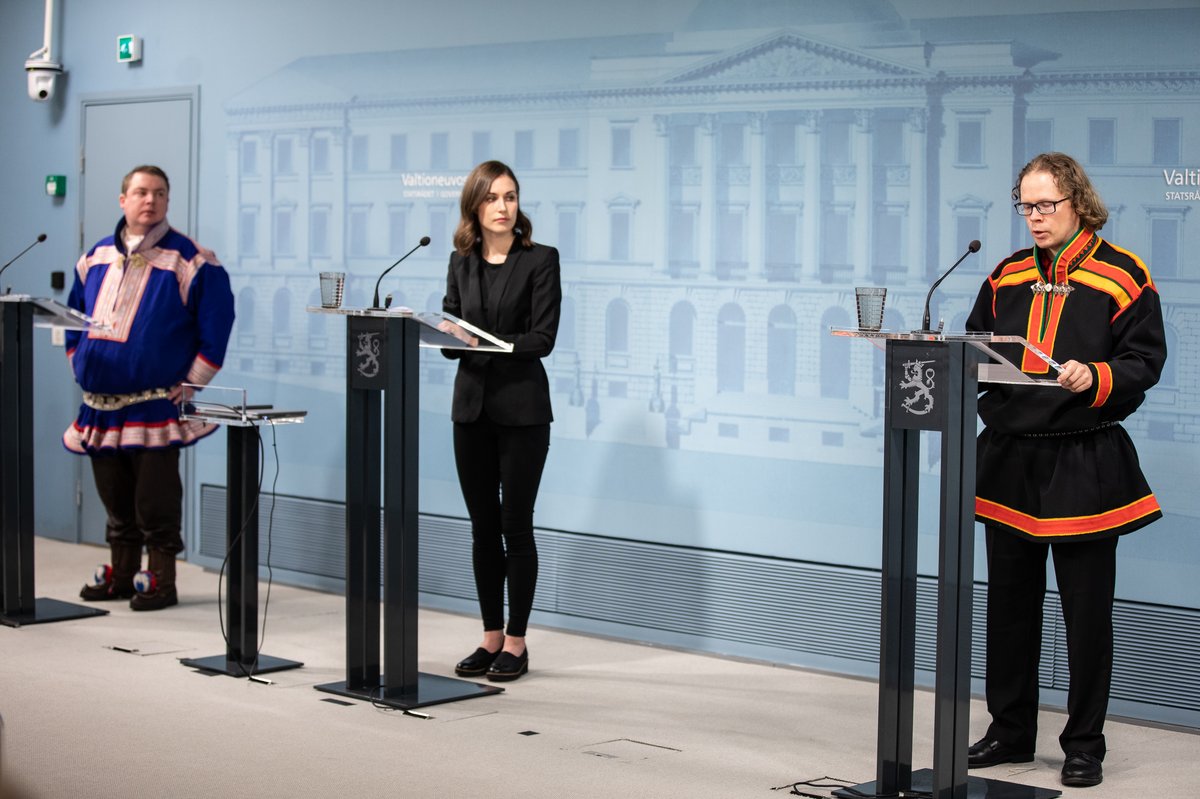Are the Nordic languages mutually understandable?
There is a common understanding outside the Nordic countries that Nordic people can all understand one another’s languages, or at least the Scandinavians (the Danes, Swedes and Norwegians) can. However, this impression of linguistic unity is not wholly accurate.
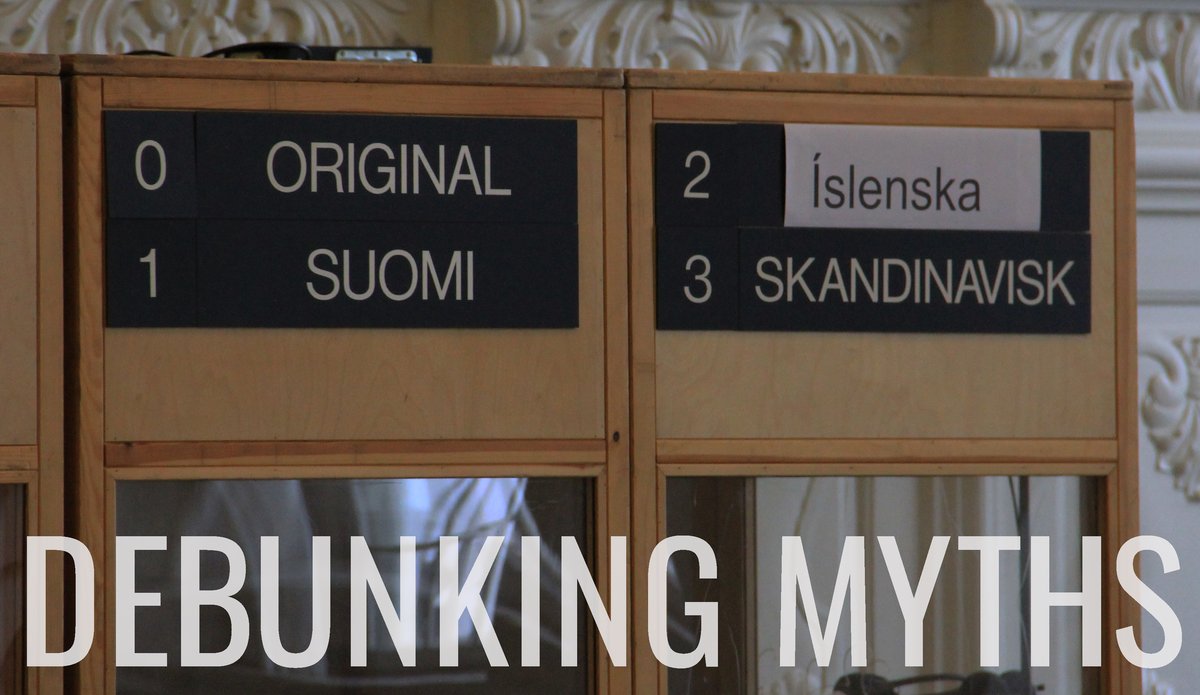
Is there a ‘Scandinavian’ language?
People from outside the Nordics might be tempted to believe communication between Nordic speakers is effortless, and that their languages are mutually understandable. From a practical point of view, ‘Scandinavian’ was – and still is – used when many Danish, Norwegian and Swedish people communicate with one another. They primarily speak their own language, perhaps replacing some words, phrases, or pronouncing things slightly differently, depending on who they are talking to. In fact, in a paper published in 2012, Maisa Martin discusses whether Skandinaviska, a Danish, Norwegian and Swedish hybrid-language, exists. At meetings of the Nordic Council and Nordic Council of Ministers and in their documentation, ‘Scandinavian’ can refer to Danish, Norwegian or Swedish, while the other Nordic languages (usually Finnish and Icelandic) are separate.
Without a doubt, there is some degree of mutual intelligibility in the Nordics, especially between languages that are part of the same language family, as is the case with the three Scandinavian languages; they are from the North Germanic branch of the Indo-European family. There is also a degree of intelligibility between some of the sign languages and between Finnish and Kven (Norway) or Meänkieli (Sweden) – two officially recognised minority languages treated as Finnish dialects. Finnish, Kven and Meänkieli are all part of the Finnic branch of the Uralic language family, together with Estonian, Ingrian and Karelian.
Yet, assuming that all speakers of Nordic languages can understand each other is not accurate. There are several crucial elements that should be acknowledged. Here are four, which are explained further in the text below:
- First, there are far more languages that co-exist in the Nordic countries than Danish, Swedish and Norwegian.
- Second, mutual intelligibility – even within these three languages – is not straightforward, but often asymmetric as it depends on factors like accent and dialect, among others.
- Third, mutual intelligibility also depends on the degree of exposure: Danes in Copenhagen may hear Swedish regularly, but that is not the case far from the border.
- Finally, mutual intelligibility in the Nordics raises a political issue. When priority is given to the national languages, many linguistic minorities can go unrecognised, or are even disadvantaged.
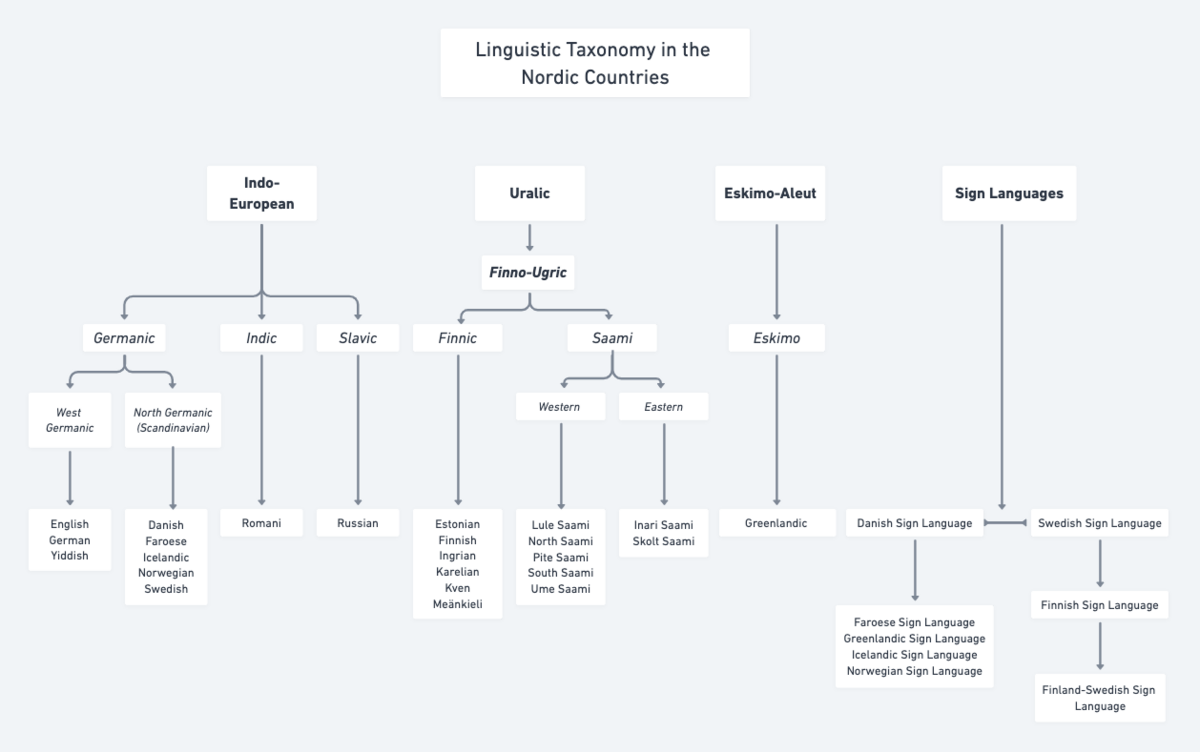
Many more languages than you might expect
A considerable variety of languages can be found in the Nordics. There are four main language families in the Nordic countries: Indo-European, Uralic, Eskimo-Aleut and Sign Languages. In all cases (apart from the sign languages), a ‘language family’ refers to a set of languages that can be demonstrated as descendants of a common ancestor. The sign languages are rather grouped together for convenience in this instance as they are complex in different ways.
The four language families are further divided into subfamilies (e.g. Finno-Ugric) or genera – groups of items with similar characteristics. Genera may also have sub-genera. Languages have linguistic features that make them similar or dissimilar to one another, and those features allow them to be categorised into different language families, like the branches of a tree. The classification of languages according to their structural features is a branch of linguistics called linguistic typology. Following this type of tree structure, the languages most likely to be mutually intelligible are those with the greatest proximity because they have more linguistic features in common. Thus, speakers of Danish, Swedish and Norwegian can understand one another more easily than they can understand German or Dutch speakers – two other Germanic languages from a different branch – and they cannot understand Finnish, an unrelated language. In fact, it would be fair to say that Finnish is as close to the Scandinavian languages as it is to Japanese. Greenlandic is also completely different from Danish, although the languages have certainly influenced each other (e.g. loanwords) because both languages have co-existed for many years in Greenland.
It is also worth mentioning that around 200 non-Nordic languages are spoken in the Nordic countries, including diverse immigrant languages belonging to either the same or other language families and genera. For example, Somali (Afro-Asiatic; Low East Cushitic), Arabic (Afro-Asiatic; Semitic), Polish (Indo-European; Slavic), and many more.
Understanding one another is not straightforward
The fact that two languages are from the same genus or sub-genus does not mean that they are automatically mutually intelligible. Despite sharing many linguistic features, the Sámi languages, all of them Uralic languages, are mutually unintelligible. The same goes for Faroese and Icelandic – two insular Germanic languages – even though they share a similar orthographic system. An exception to this general rule of mutual intelligibility across genera and families would be the sign languages. This is because there is no established typology of sign languages due to a lack of knowledge and research in the area to date.
Still, even among some of the Nordic languages with the most similar linguistic structure, many studies have shown asymmetric mutual intelligibility. For example, Charlotte Gooskens, a linguist who studies inter-Scandinavian communication in relation to mainly Norwegian, Danish and Swedish, found that Norwegian speakers are better at understanding Danish and Swedish than the speakers of the other two languages. Gooskens also found that Danes understand Swedish better than the opposite, despite the fact that Danish and Swedish are practically mutually intelligible on a written level. In part, this could be attributed to the fact that the pronunciation of Swedish is more closely related to its written form than is the case for Danish. The written form of Danish is closer to Swedish than the spoken form.
Dialects also influence the mutual intelligibility of a language at the spoken level. It is difficult for people unfamiliar with specific dialects to decipher what is being said. For instance, the traditional Danish dialect from the island of Bornholm is challenging to comprehend for other Scandinavians, even to some who possess Danish as their mother tongue.
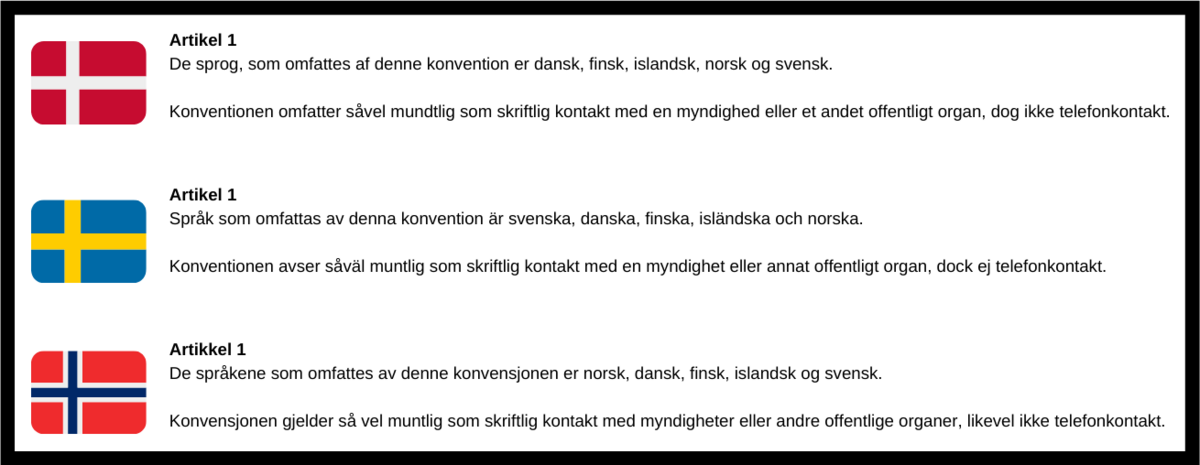
Exposure to other languages
At school, most children are exposed to one or more Nordic language that is not their own. Examples include: Swedish speakers throughout Finland learning Finnish and vice versa; most schools in Greenland are Greenlandic-Danish bilingual; and, for historical reasons, the learning of Danish is prevalent in the Faroe Islands and Iceland. Since 1982, the Helsinki Treaty (the founding document of Nordic cooperation) has included a provision that states:
“Educational provision in the schools of each of the Nordic countries shall include an appropriate measure of instruction in the languages, cultures and general social conditions of the other Nordic countries, including the Færoe Islands, Greenland and the Åland Islands.” (Article 8).
The geographical proximity of different linguistic groups also leads to greater language contact and understanding. Individuals living close to language borders are more likely to be in contact with the neighbouring language, and consequently learn to speak or understand it. Sámi people tend to find the neighbouring Sámi dialects more intelligible because of their level of exposure. Similarly, individuals might understand a language better because they have been exposed to it through media broadcasting. In the Scandinavian countries, the prevalence of dubbing foreign films or television programmes also stimulates exposure. Finally, attitudes towards the language, like a feeling of unity, may lead to concrete initiatives, such as the 1981 Nordic Language Convention, the 2006 Declaration on Nordic Language Policy, or the use of Skandinaviska. This may increase mutual intelligibility or at least the will to be mutually intelligible. Nevertheless, the belief that all speakers of the Nordic languages can understand each other is a myth.
Categories of language used in the 2006 Declaration on Nordic Language Policy
The political dimension of the myth
The historical, social and cultural ties between the Nordic countries mean that people have sought to understand one another in the region for centuries. However, measures taken by the Nordic Council and the Nordic Council of Ministers since the 1960s can be seen as a watershed for mutual intelligibility becoming a political issue: Nordic co-operation is, to a certain extent, founded on mutually intelligibility of language, as well as mutual social, cultural and political norms. The Helsinki Treaty, first signed in 1962, envisaged the strengthening of social and cultural ties. In 1981, the Nordic Language Convention’s goal was to allow Nordic people to use their mother tongue when dealing with official bodies across the Nordic countries. However, the convention does not cover all mother tongues, but only Danish, Finnish, Icelandic, Norwegian and Swedish. In 2006, a non-binding Declaration on Nordic Language Policy built on this foundation, arguably with more recognition for a greater number of languages and multilingualism. The message is clear: Mutual intelligibility is crucial to Nordic co-operation.
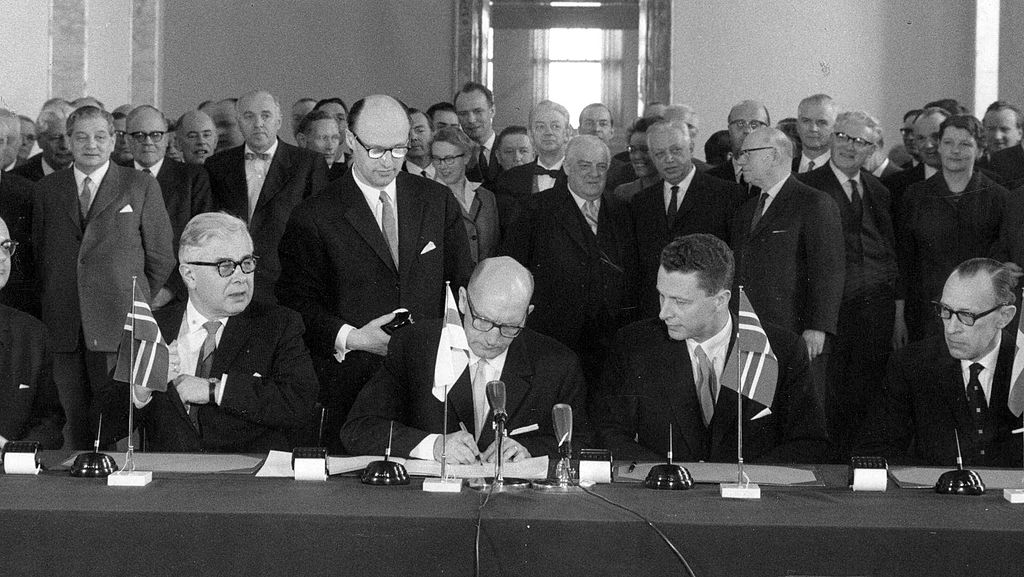
But does mutual intelligibility have to be based on a Nordic language? According to a Nordic Council of Ministers survey in 2021, 95% of young people in the Nordic countries say that English is ‘easy to understand’, when young people in Finland, Greenland and Iceland find Danish, Swedish and Norwegian ‘difficult to understand’. In this context, it has been argued that the use of English could make the linguistic situation more equal for everyone. But, since the Nordic languages are perceived as a key element of Nordic identity, the linguistic battle for Nordic co-operation can potentially be seen as a battle against English.
In another context, the Nordic governments, as well as the Nordic Council and the Nordic Council of Ministers, have taken initiatives towards equality and the inclusion of minority groups including their languages. For example, in October 2021, the Finnish government initiated a Truth and Reconciliation Commission with the purpose of acknowledging past and present discriminative acts against the Sámi and their consequences, and to raise awareness of the Sámi Indigenous community in Finland, reinforcing their right to maintain their language and culture. Still, especially for linguistic minorities, multilingualism and the use of languages other than their mother tongue remain necessary to function in the various contexts of Nordic society. Together, speakers of minority languages (e.g. Sámi), dialects (e.g. Bornholmsk), vernaculars (e.g. Rinkebysvenska, an urban vernacular spoken in a neighborhood with many immigrants in Stockholm), and speakers of older or newer immigrant languages (e.g. Somali) have to adapt.
On the one side, there are a variety of political reasons for perpetuating the myth that all speakers of Nordic languages understand one another. On the other, there is political will to ensure that speakers of minority languages are also included in the political, cultural and social life of the Nordics. While political initiatives tend to focus on Danish, Swedish and Norwegian in the name of unity and co-operation, people with other linguistic preferences have to be more linguistically flexible - often at the expense of fully expressing themselves and making themselves heard. Mutual intelligibility can be used as a symbol of a big, happy family when looking at the Nordics from the outside, an image which rather hides the reality of language in the Nordics – a reality which is in fact much more rich and interesting.
This article has been translated into Danish for www.lingoblog.dk and can be read by clicking here.
Further reading:
- Beng Östling, ‘Will English become the new Nordic language of cooperation?’. Nordiclabourjournal.org (2021).
- Charlotte Gooskens, ‘The Contribution of Linguistic Factors to the Intelligibility of Closely Related Languages’, Journal of Multilingual and Multicultural Development, 28, 6 (2007) pp. 445-467.
- Maisa Martin, ‘Multilingualism in Nordic Cooperation – A View from the Margin’, in Dangerous Multilingualism: Northern Perspectives on Order, Purity and Normality (London: Palgrave Macmillan, 2012).
- Oscar Bandle, Kurt Braunmüller, Ernst Hakon Jahr, Allan Karker, Hans-Peter Naumann, Ulf Telemann, Lennart Elmevik and Gun Widmark, ‘The Nordic Languages’ (Berlin: De Gruyter Mouton, 2008).


